Saturday August 13, after breakfast, we got ready to move on. We left St. Albert, Alberta at 8:40 with Acey’s mileage at 92,277.6 and Thor’s at 105,079. Since we DID finally do some bike riding in St. Albert, a report on bicycle mileage is in order – we now have ridden the bikes 2096.5 miles since we left Nashville in May 2020. We drove separately the 6 miles to the gas station and got 236 liters of diesel. Edmonton has the best price on fuel for the rest of our time in Canada, but at $1.509/liter it’s no bargain! It was again a nice clear day to drive on the four-lane divided highway. (We had not been on one in quite some time!)

We passed a few farms along the way. It was interesting to note there are no fences all along the road as there are on US interstates.

Still following the Yellowhead route, we crossed the border into Saskatchewan.


About 3:15 we arrived at the Saskatoon 16 West RV Park and added Saskatchewan to our Canada map.

Sunday morning we worshipped with Stephens Valley Church by YouTube watching last week’s worship service (bulletin).The sermon focused on Psalm 95 and the what, how and why we should worship and praise our great God – with humility, praise and thanksgiving – He is a great King above all gods, the creator, and our shepherd. He loves us and bought us with the price of the blood of his own Son. It had been a few weeks since we joined in worship with the church and this was a wonderful service to join and praise God! After that, we zoomed with our Sunday School class, looking at Acts 9 where Saul meets Jesus on the road to Damascus. Saul had been the leading persecutor of Christians and his dramatic conversion was one of the greatest events in the history of the church! What a wonderful way to start our day!
Kimberly was not feeling well and decided to take the day to rest, so Lee joined us to venture out. Our first stop was the Saskatchewan Railway Museum (SRM). There was an extensive collection of trains, a streetcar, buildings and a museum. Lots to see! (And maybe too many details shared in this blog…)

We started off on a ride to the far reaches of the property sitting on the back of this small train – it was used to carry workers down the rail in its former life.

This passenger car was the car furthest out on display, but not open for us to walk thru.

Peeking in the window, it looks like there are first class accommodations in the front and less roomy seating in the back section.

Next was a sleeper car, which we walked thru, but didn’t take photos – the beds seemed short – maybe 6’ long.
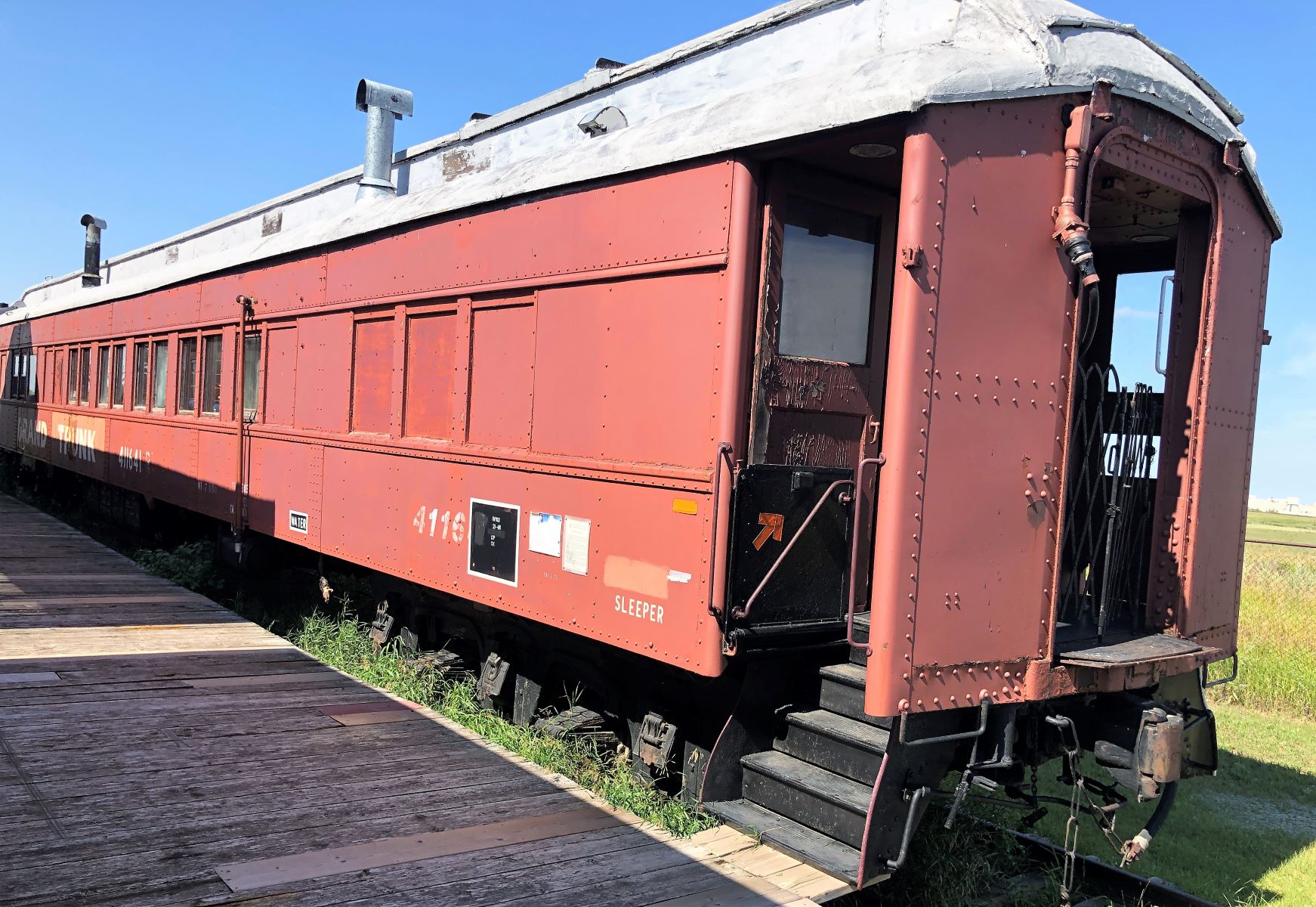

There were some offices at the train station that were interesting to look at.


A sign above this device read “COPY MACHINE (BOOK PRESS) This was an early copy machine used in some stations and other businesses for duplicating reports and letters. It was labour and time intensive and was replaced by carbon paper and later by a mimeograph machine and now by photocopy machines.”
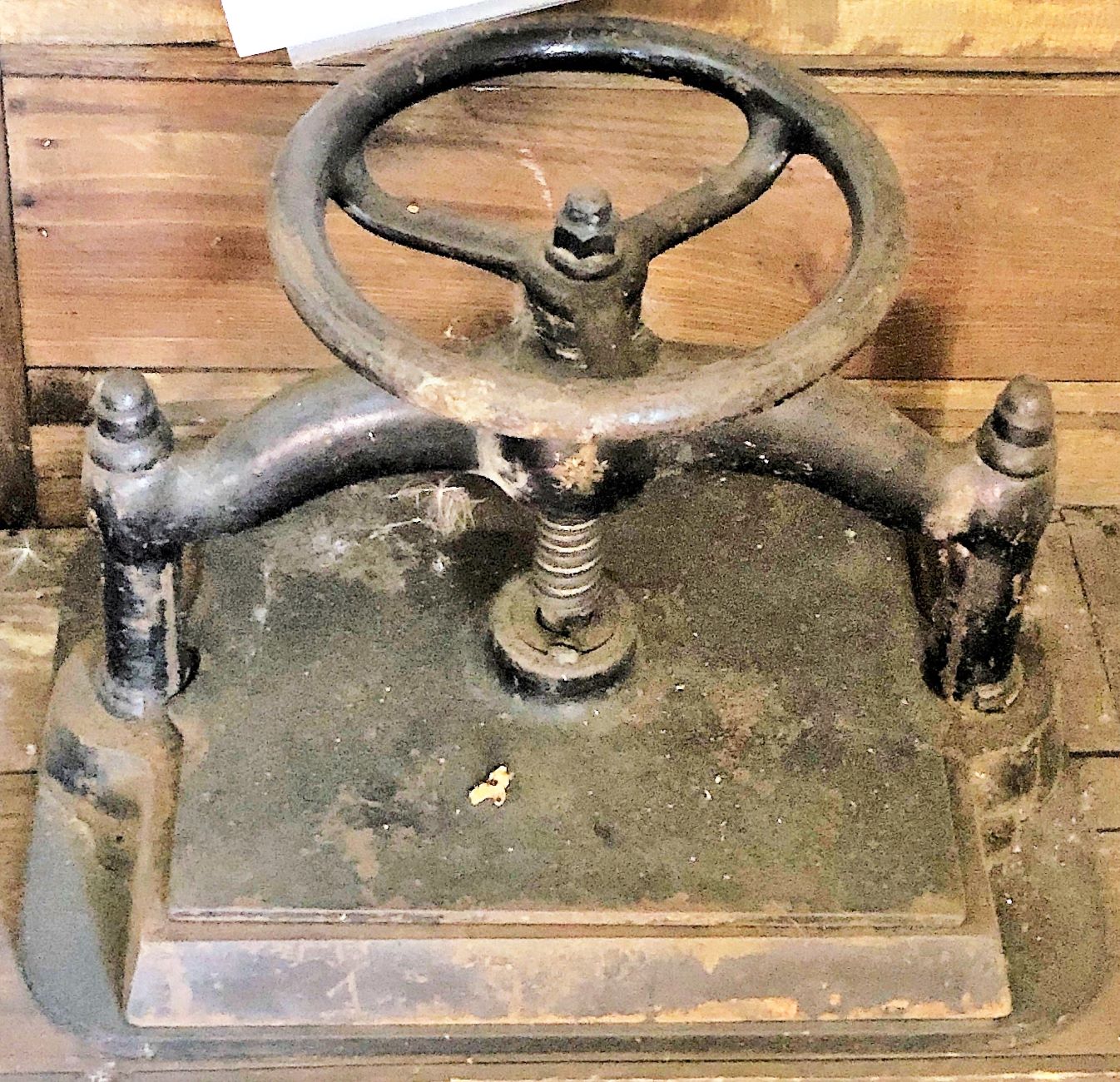

Unity Express Baggage Shed.





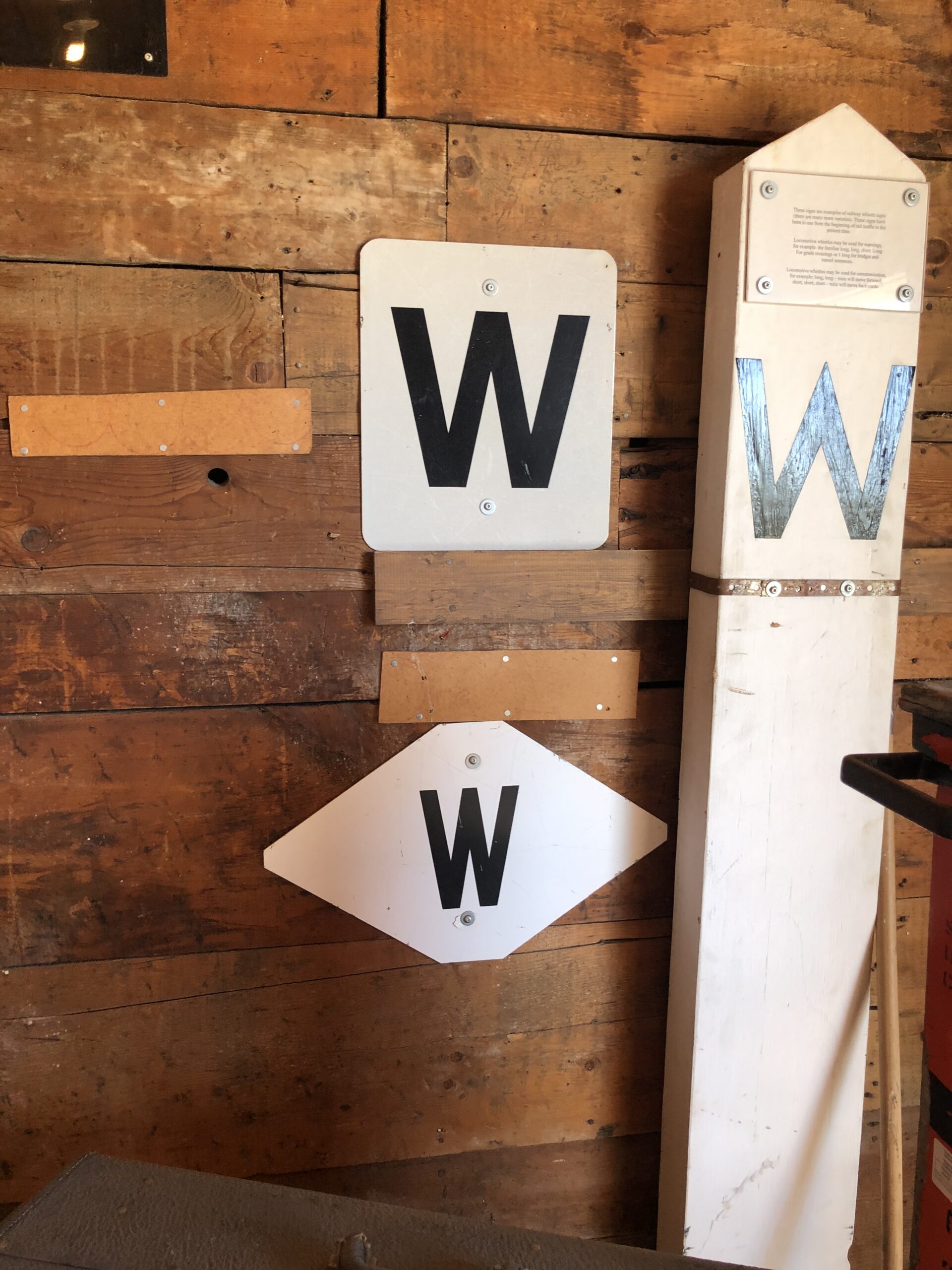



Here’s Lee and Jim climbing up to see the yellow caboose.

Inside the caboose was a furnace and a little kitchen and a washroom – Jim climbed up to sit in the cupola – the seat back can be flipped to either side so you can look forward or back.



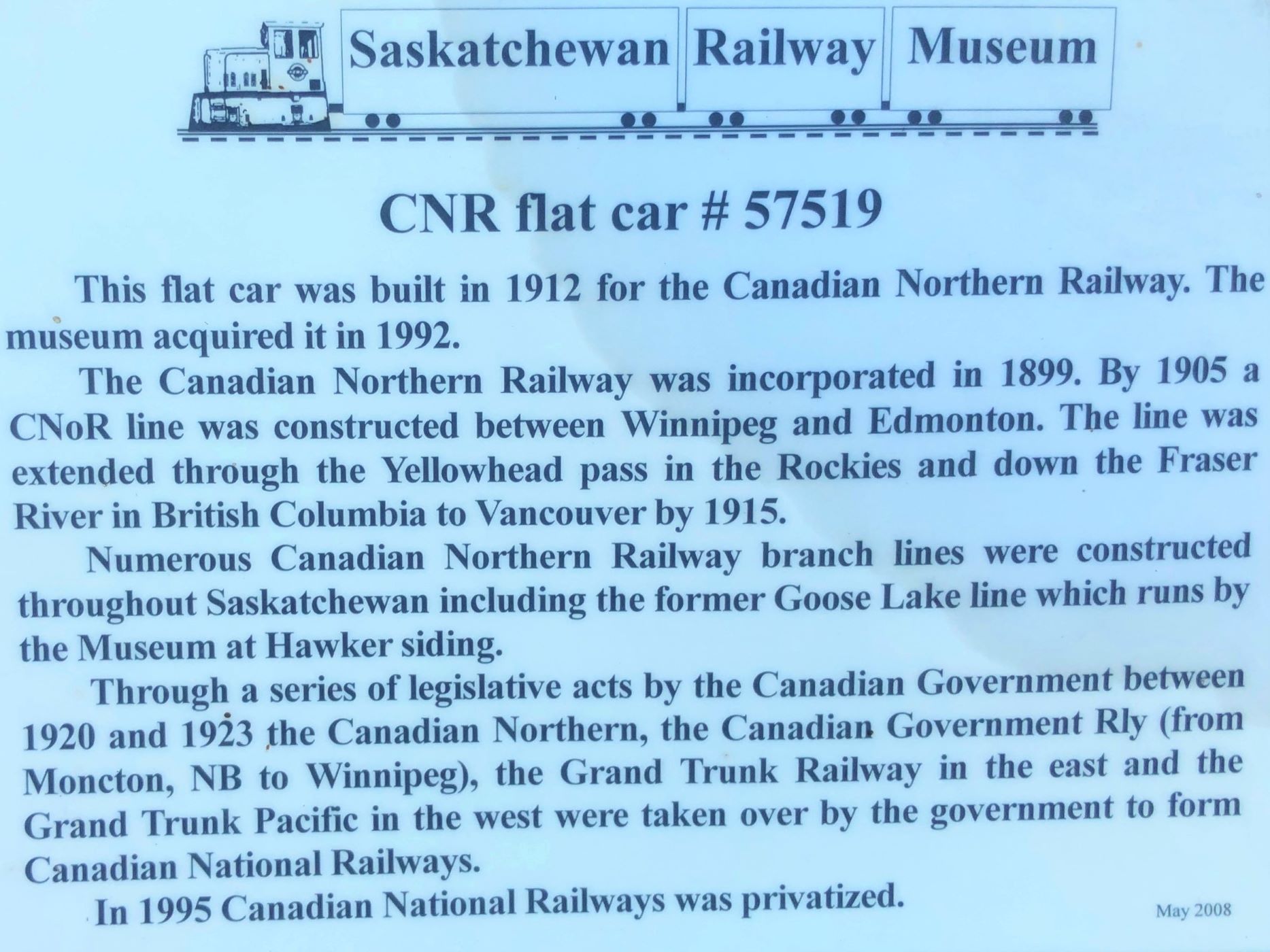
OOPs – the photo of the toolhouse is crooked…

Lots of tools inside.

This red caboose had a full kitchen, a furnace, a washroom and swivel seats in the cupola.



Saskatoon Municipal Railway Tram #51


This tram was operated by one motorman who also collected fares and tickets. This controller (like a locomotive throttle) was used to engage traction motors and wheels to speed up or slow down the tram.

This is a manual railway brake wheel – used as back-up to the air brakes. It is turned clockwise to apply brakes.


Canpotex Hopper Car 32039













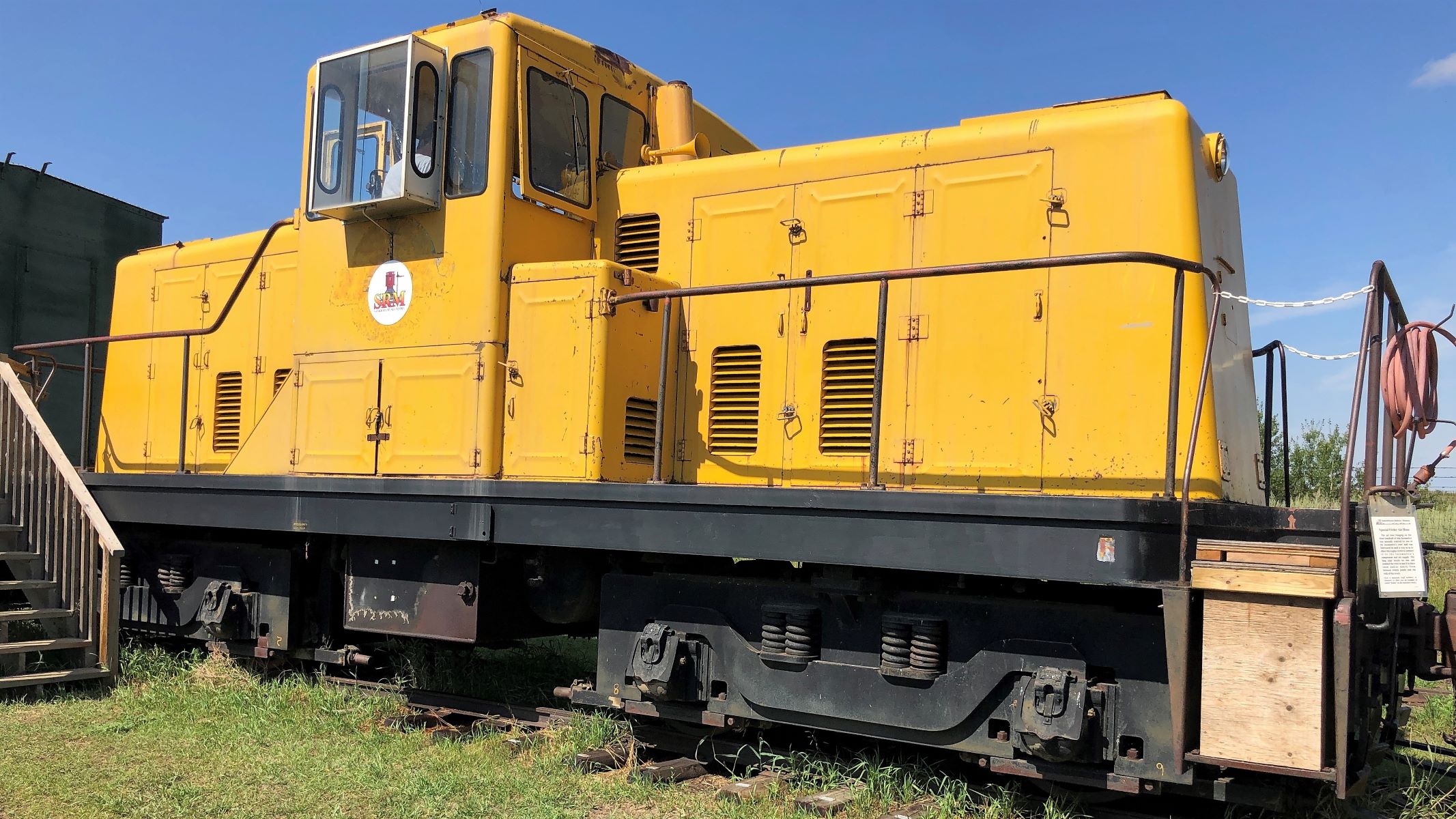


The museum had several of these small engines in the tracks – kind of like a “smart car”?!

Jordan Spreader – can also be used for snow removal.


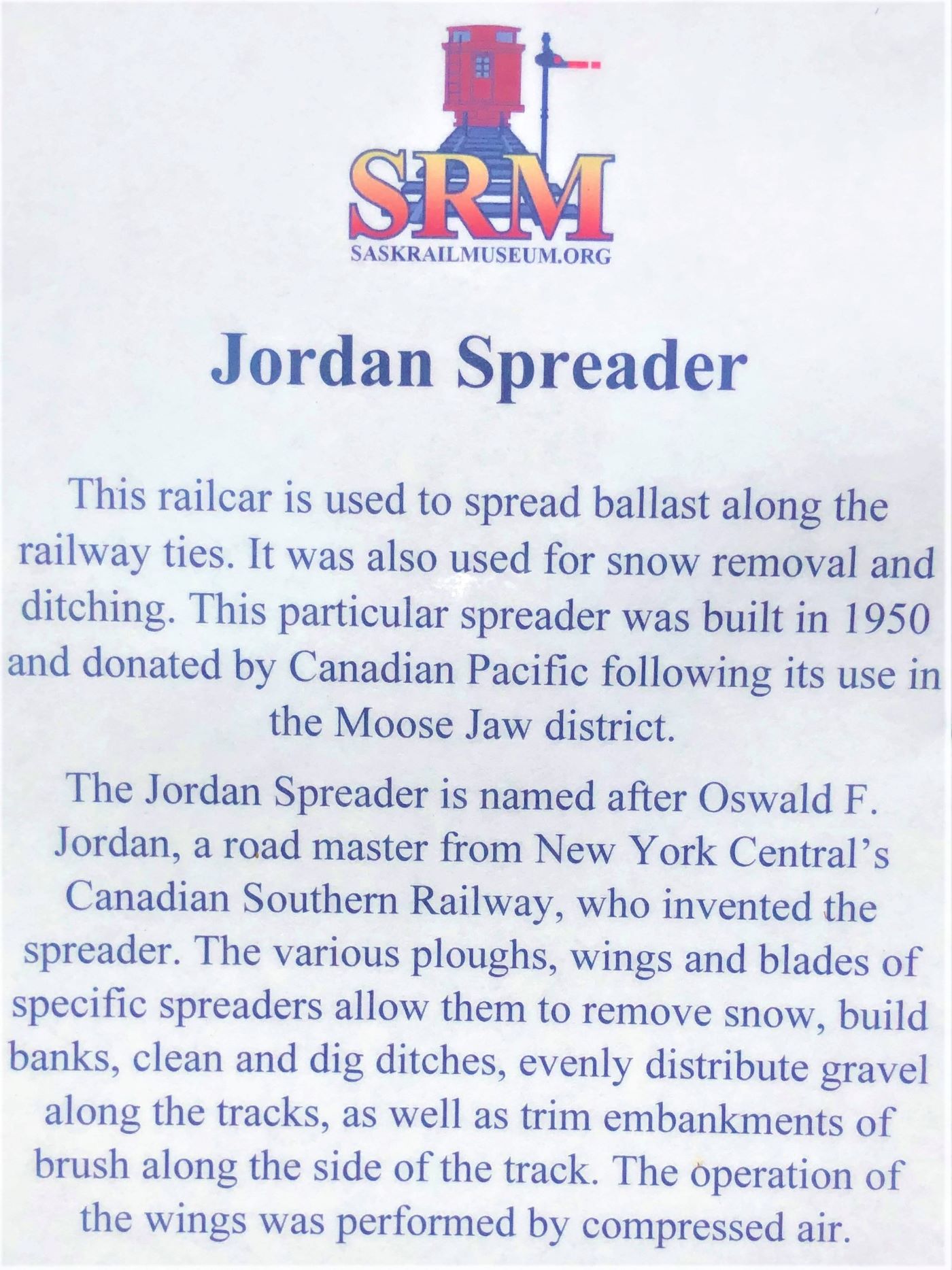
Snow plows, like the spreader above, must be pushed by a locomotive.


A fun read – about riding in a snow plow!





We visited the Kopko Interpretive Centre – housed in this former bunkhouse.



The Saskatchewan Railway Museum site, also known as Hawker, (and formerly known as Eaton) has been declared a heritage site because the Eaton internment camp was located there in 1919. A permanent indoor exhibit to recognize and commemorate the history of the location opened earlier this year in the Kopko Centre.



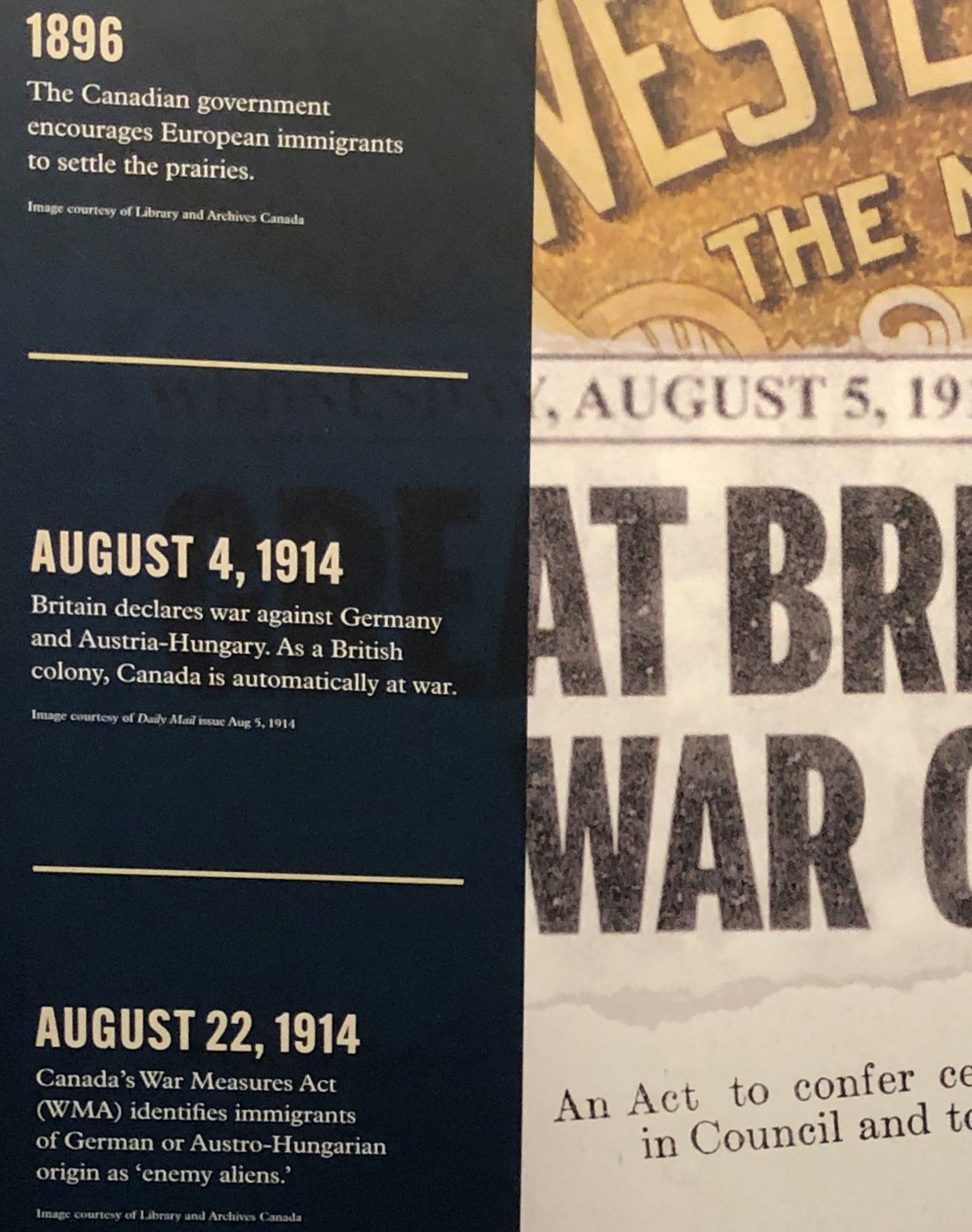




We knew the US had held many Japanese during WWII, but did not know Canada had several internment camps where they held “enemy aliens” during the First World War. We read on to lean more…



The map above indicates where the camps were (red dots), receiving stations (white dots), road building and land clearing (squares) and camp construction (triangles). The information on the board is too small to read – so here’s some of it:
“WHAT THEY BUILT When you travel through Canada’s National Parks and other areas near these internment sites, consider the contributions these men made to our national infrastructure.
The internees worked on various road projects in Canada’s national parks including:
- A section of the Banff-Lake Louise highway
- The Mt. Revelstoke summit road, and
- The road to Maligne Canyon in Jasper National Park
Interned ‘enemy aliens’ from Kapuskasing, ON fought the Great Matheson Fire of 1916 in Northern Ontario, saving the towns of Kelso, Iroquois Falls, and Cochrane, but not before 223 lives were lost in Canada’s worst fire disaster.
Internees expanded the military training grounds at Petawawa and Valcartier for the Canadian Expeditionary Force.”
“MANY FORMS OF RESISTANCE A full-scale prison riot at Kapuskasing was put down after twelve internees were shot and bayoneted. Work stoppages and hunger strikes occurred at the Jasper, Otter, Revelstoke, Spirit Lake, and Amherst camps. Prisoners often sabotaged sawmills and damaged tools.
Others simply surrendered to depression and melancholy; committing suicide or becoming insane – succumbing to what psychologists labelled ‘barbed-wire disease.’”

If you want to learn more about this dark chapter in Canadian history read this.
~ * ~ * ~ * ~ * ~ * ~
There was more to see at the Kopko Centre. This is a Centralized Traffic Control Panel.



The china and silverware in his display case is a legacy donation from Canadian Pacific in honour of its 125th anniversary of driving the last spike – 2010.



We had just a few more things to see outside as we pondered what we just saw in the Kopko Centre. We were back where we boarded the shuttle earlier and took a look at the small building.


One end of the building was set up as an office with a stove.

The other end was more of a storage facility – with station signs and other items from days gone by.

Canadian Pacific Ore Car 377193.


Cominco Tank Car 14532 – this tank car was built for the Union Tank Car Line in 1930 for chemical service. It was later sold to Procor then Cominco. It was donated to the Museum in 1992.

Canadian Pacific Flat Car 420833.


Canadian Pacific Engine#6568.


We stopped for lunch at Prairie Sun Brewery and then on to Saskatchewan Aviation Museum which was not very large and we were somewhat disappointed, but there were a few interesting aircraft on display.

Only a few aircraft were outside – this De Havilland Tracker had foldable wings.


This plane had quite a story to tell – if only it could talk!


Inside, we saw more aircraft, this one was the most interesting because of it’s story.

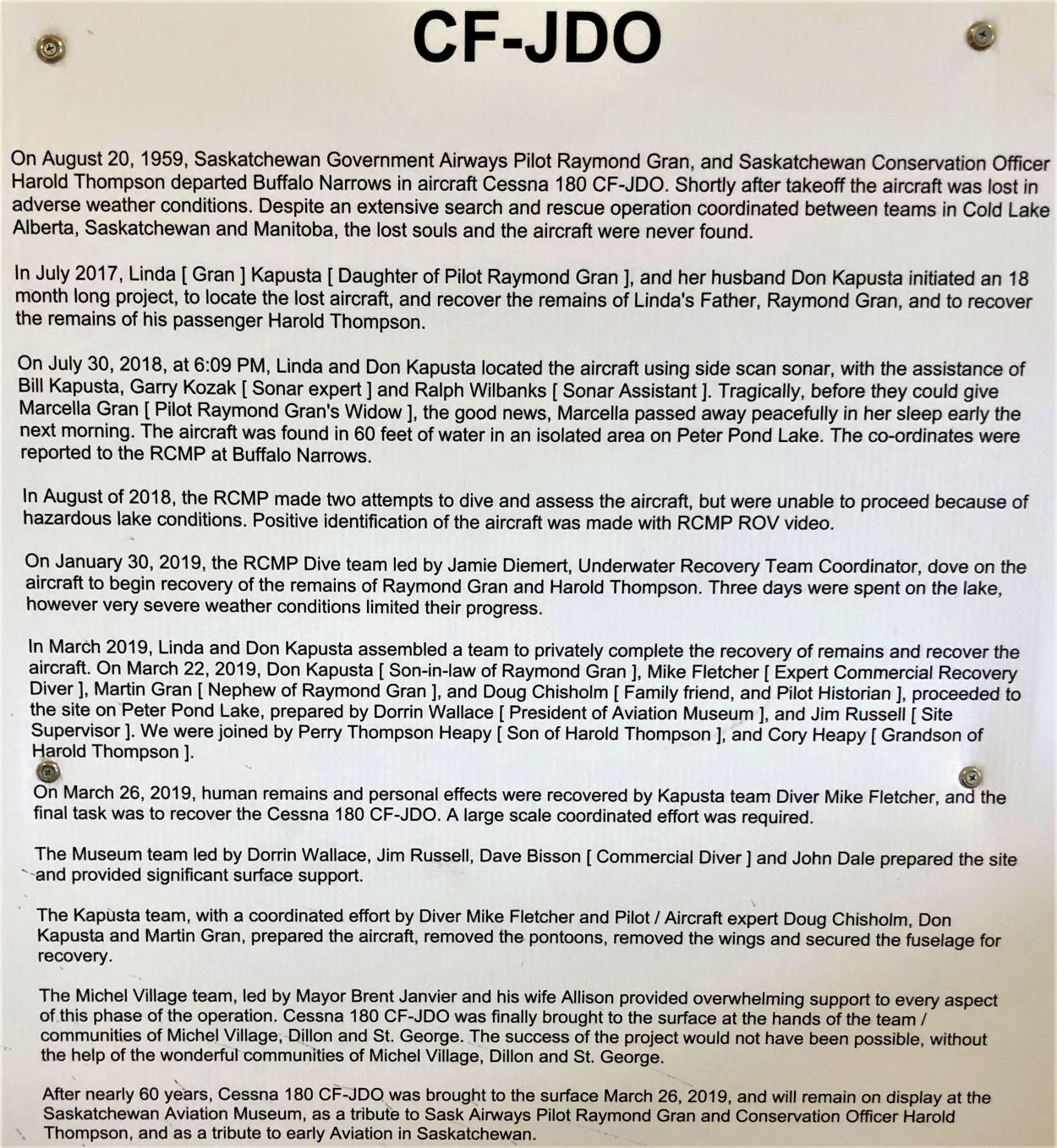
After seeing all the trains and planes, it was time for a brew, so we stopped in at 9 Mile Legacy Brewing.

On our way back to the campground, we stopped at Canadian Tire – a large department store that carries a variety of items; automotive, hardware, leisure, sports and home goods. Lee passed by the sports section and saw this display. He commented “Can you tell I went to a Canadian store?” 😊

Monday Linda got 2 loads of laundry done and worked on the blog while Jim worked on cleaning Acey outside – so much sand, gravel and dirt picked up on the caravan: it’s everywhere! After a light lunch, we headed out to the Western Development Museum with Lee and Kimberly. The first section we came to was like going back in time to Main Street in Boomtown!



We walked down Main Street and visited the different places there. Some of the mannequins were kind of scary looking! Wonder why the switchboard was in a home setting – maybe the local operator worked from home?!









The General Store seemed quite welcoming – a nice place to hang out when you went to town to shop!
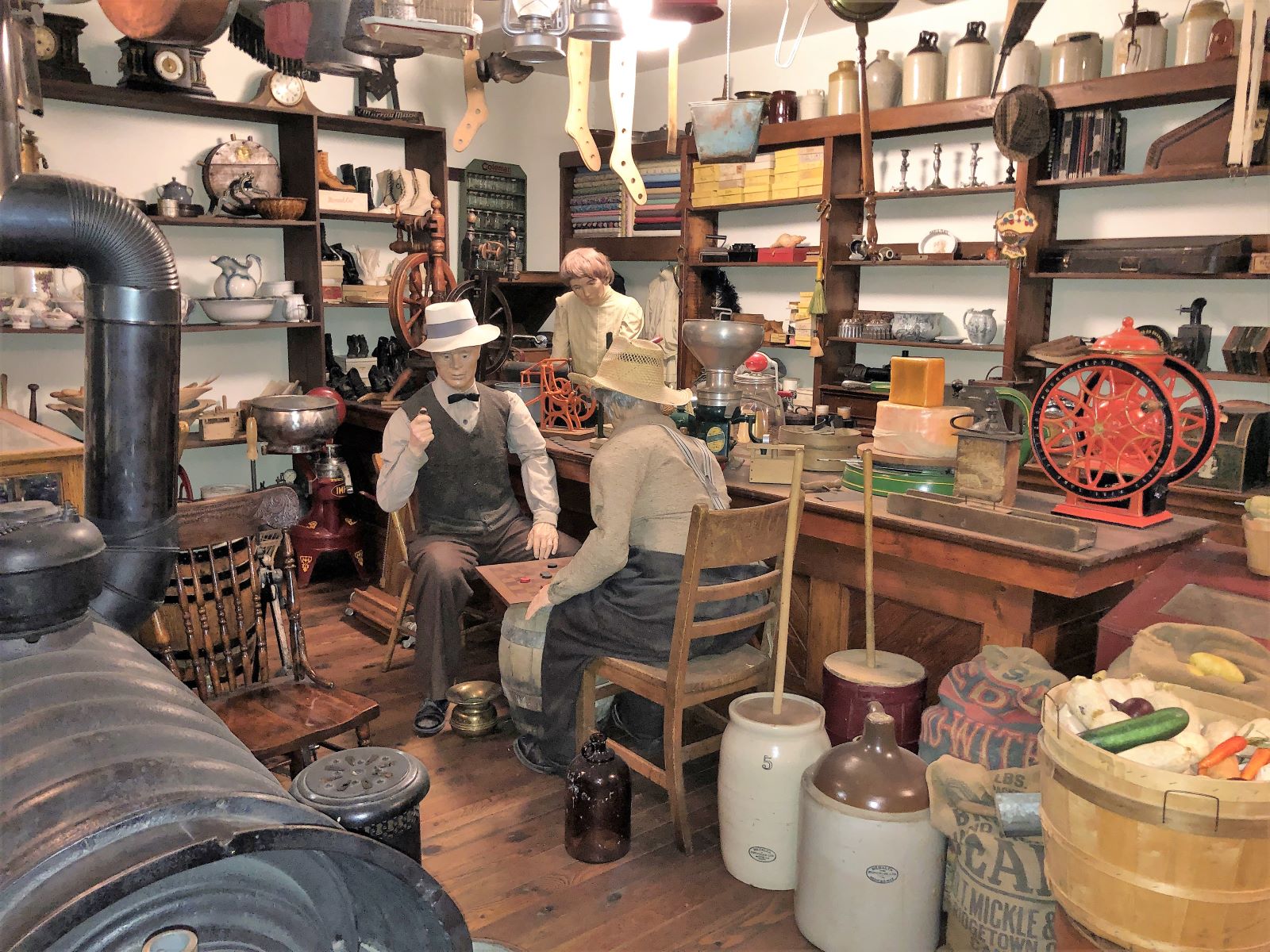






The date on the chalkboard with a lesson about Prime Ministers is March 28, 1910





The train station at Boomtown was at the end of Main Street




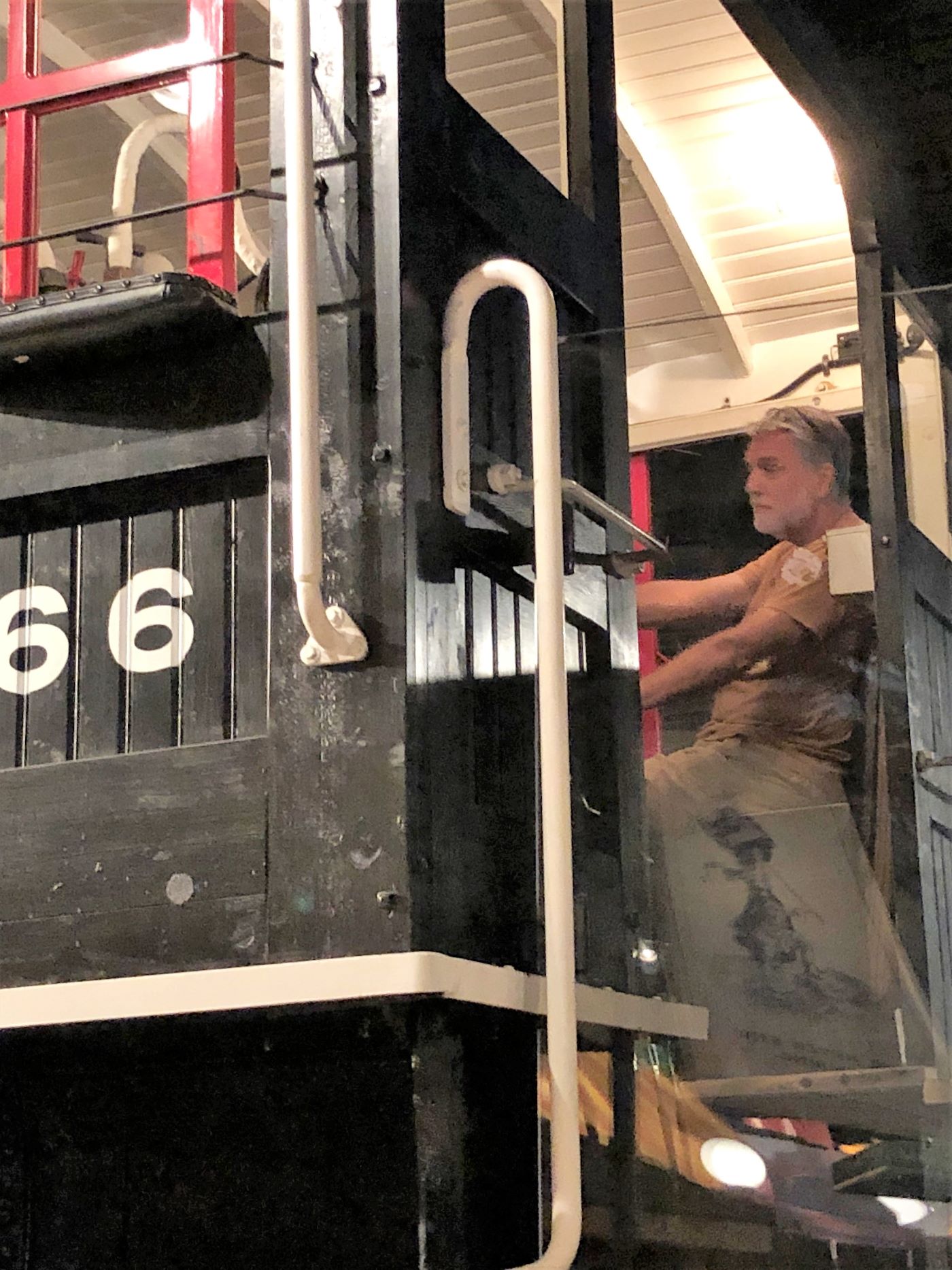






The focus turned to farming – here is an example of a sod house that many pioneers lived in until they could build a more substantial home. (Not many trees grew on the prairie to provide logs)

This was an early battery to store electricity for your home!
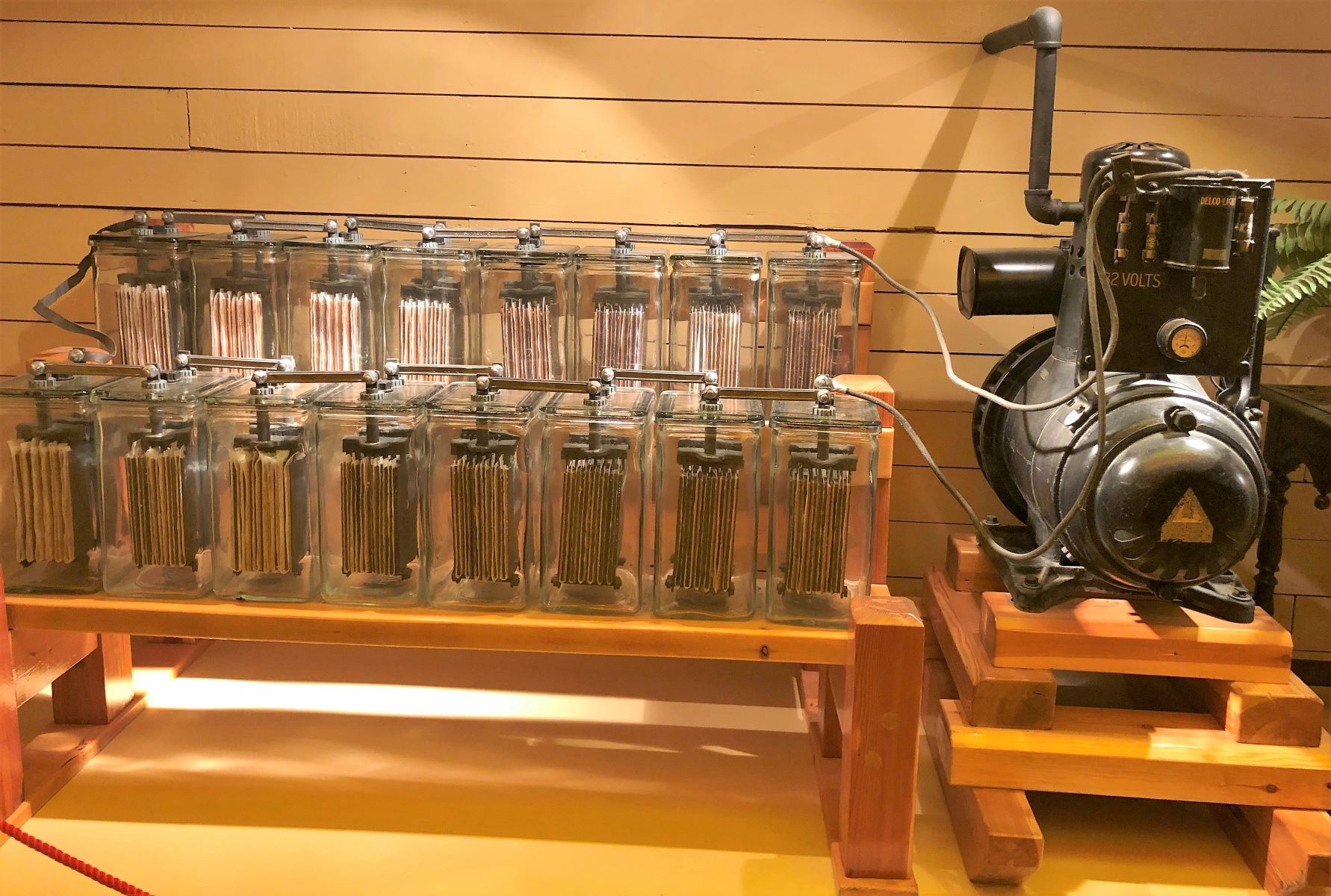


NOW… WHAT SHALL WE BUY?



Here is a Bennett Buggy – named for Richard Bedford Bennett, who served as Canada’s prime minister from 1930 to 1935, when the country was going through the worst part of the Depression. The windows and engine were removed and the car was pulled by a horse. (In the US they were called Hoover wagons)


Several toys, records and other memorabilia from yesteryear were on display; Jim remembers having one of these! It may have been his grandfather’s.

And Linda remembers having hours of fun with one of these!

Another section of the museum had farm equipment on display.


The Western Development Museum had several really large tractors on display – This Pioneer 30-60HP is a gas tractor – c. 1916

Titan D 24 HP – International Harvester gas tractor – c. 1910

The Phoenix Centiped Log Hauler

The phots below says, “Better than a Blue Ox named Babe The Phoenix Centiped Log Hauler used a steam locomotive engine to tug sleds of logs over ice roads in northern Saskatchewan. The machine pictured here was used by the Pas Lumber Company near Hudson Bay in the early 1900s. The log hauler required a crew of at least four and could haul over 20 sleds at a time piled with logs. The WDM has two of the six machines that remain.”

We found classic automobiles in another area. Get a load of the tail fins on this ’59 Caddy!


Take a look at this beauty – a 1948 Chrysler New Yorker


Think electric cars are a new idea? Think again!!
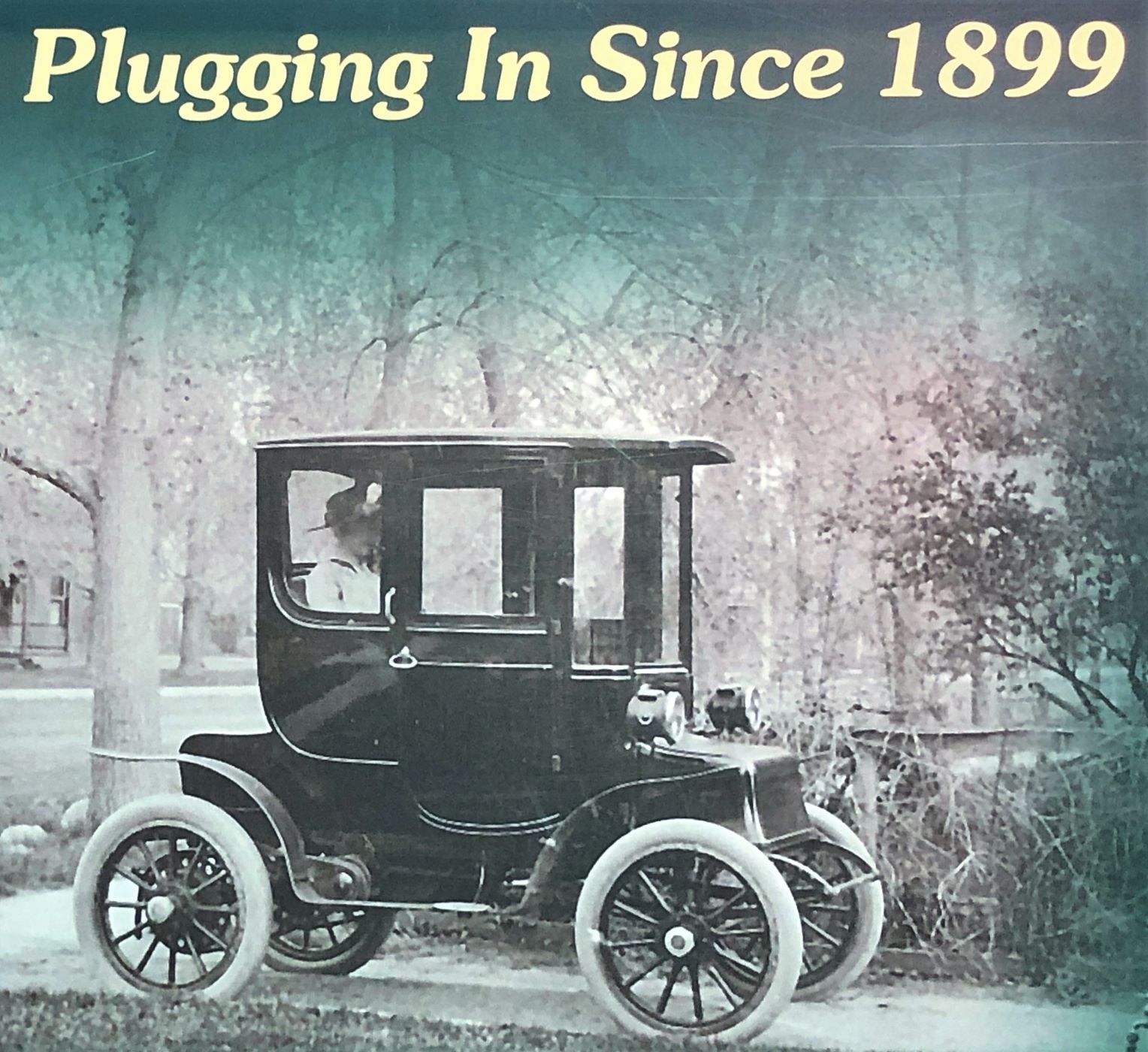


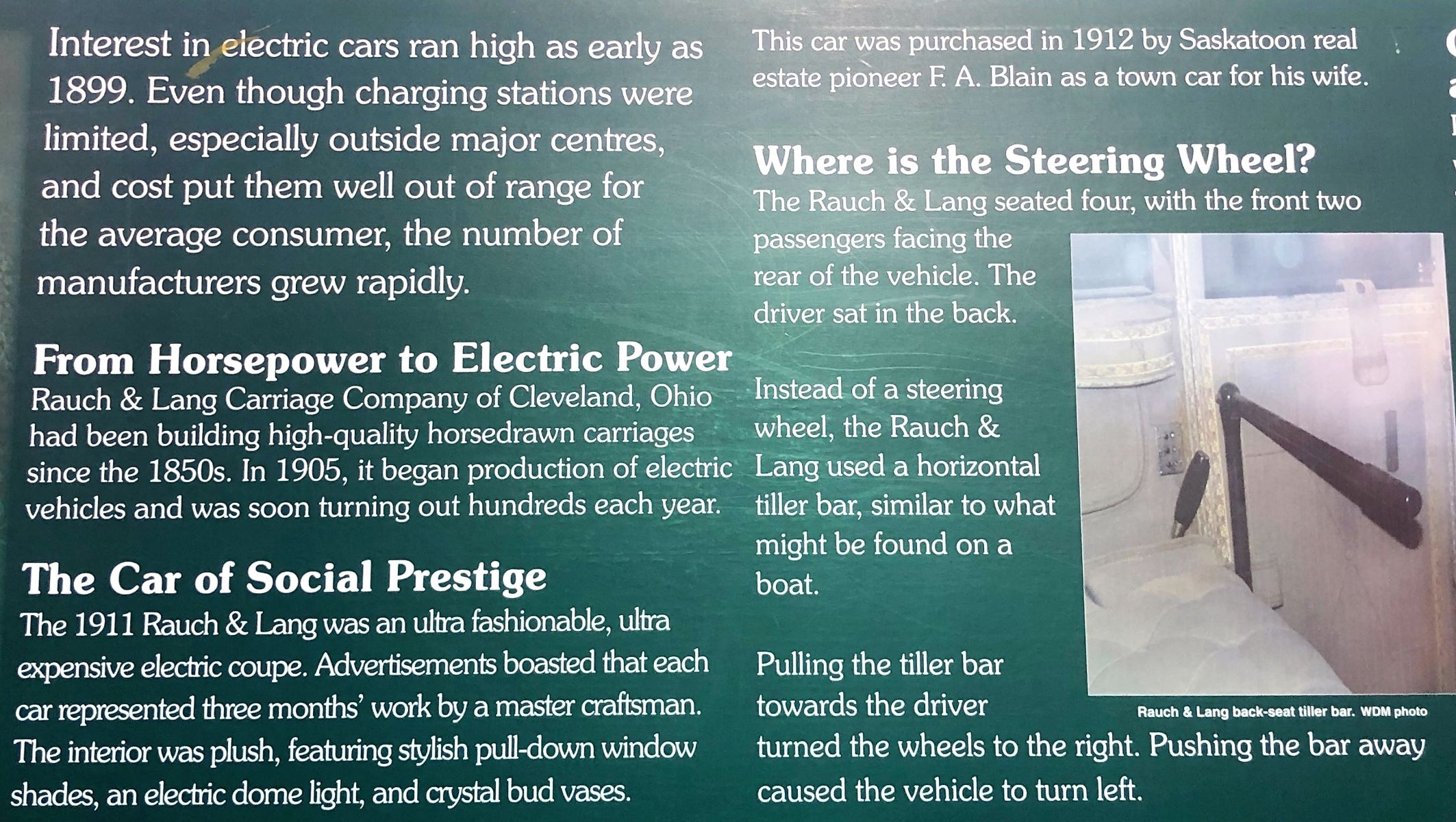

Another innovative idea – make gas from straw!

Gas From Straw: A Saskatchewan Story






A few other things that you probably never saw…. here’s a Model T converted to be a snowmobile!



An early version of a travel trailer.


Take a look inside…





And a Comfortractor – definitely ahead of its time!


Our heads were overloaded with all that we saw at the museum — time for linner (or lupper? Lunch + supper) and a brew! We stopped at the Hose and Hydrant Brewing Co. located in a former fire hall.


We went for a walk along the riverfront and saw the Prairie Lily riverboat.

Continuing along the river, we came to a weir and watched some pelicans fishing!
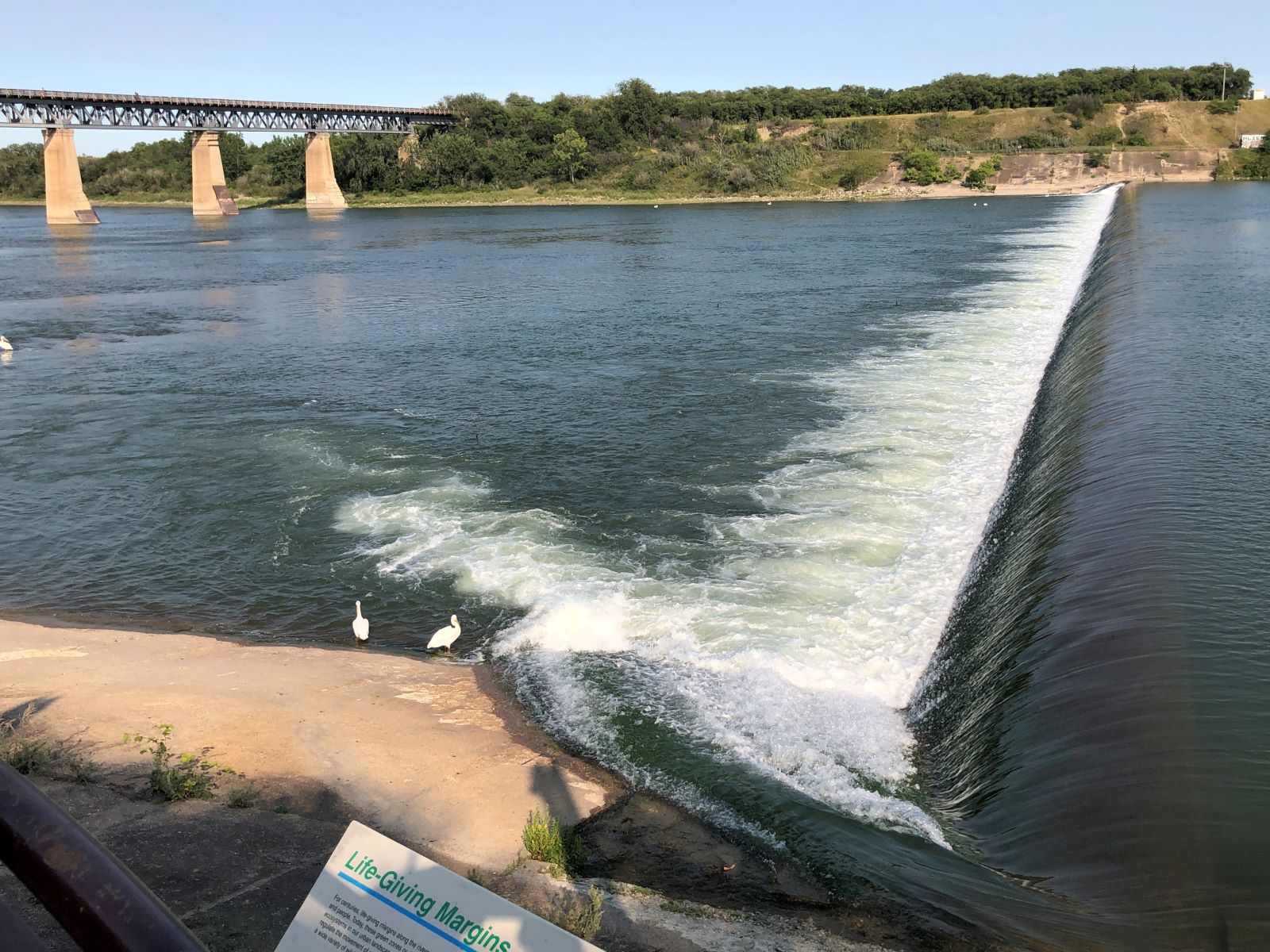



That was a rather full day of fun and adventure! We move on to Regina in the morning, so we made a few preparations and called it a day! On Tuesday morning, August 16 we left Saskatoon at 9:50. Acey has 92,608.6 miles and Thor 105,157. We left the Yellowhead Route and headed south on Route 11 to Regina. Another nice day to drive on 4 lane divided highway – and we ran into a small construction zone near Lumsden!

We arrived at King’s Acres Campground in Regina, SK at 1:20. We got set up and had lunch. Later, we had happy hour with Lee and Kim.
On Wednesday, we visited the MacKenzie Art Gallery. The museum’s website describes one of the exhibits we saw: “RADICAL STITCH IS ONE OF THE MOST SIGNIFICANT EXHIBITIONS OF CONTEMPORARY INDIGENOUS BEADING ACROSS NORTH AMERICA EVER PRESENTED. Beading is one of the defining mediums of contemporary Indigenous art on this continent, and this landmark exhibition will bring much needed critical attention to the breadth and impact of this practice.” The beadwork was incredibly amazing! Here are just a few things we saw.












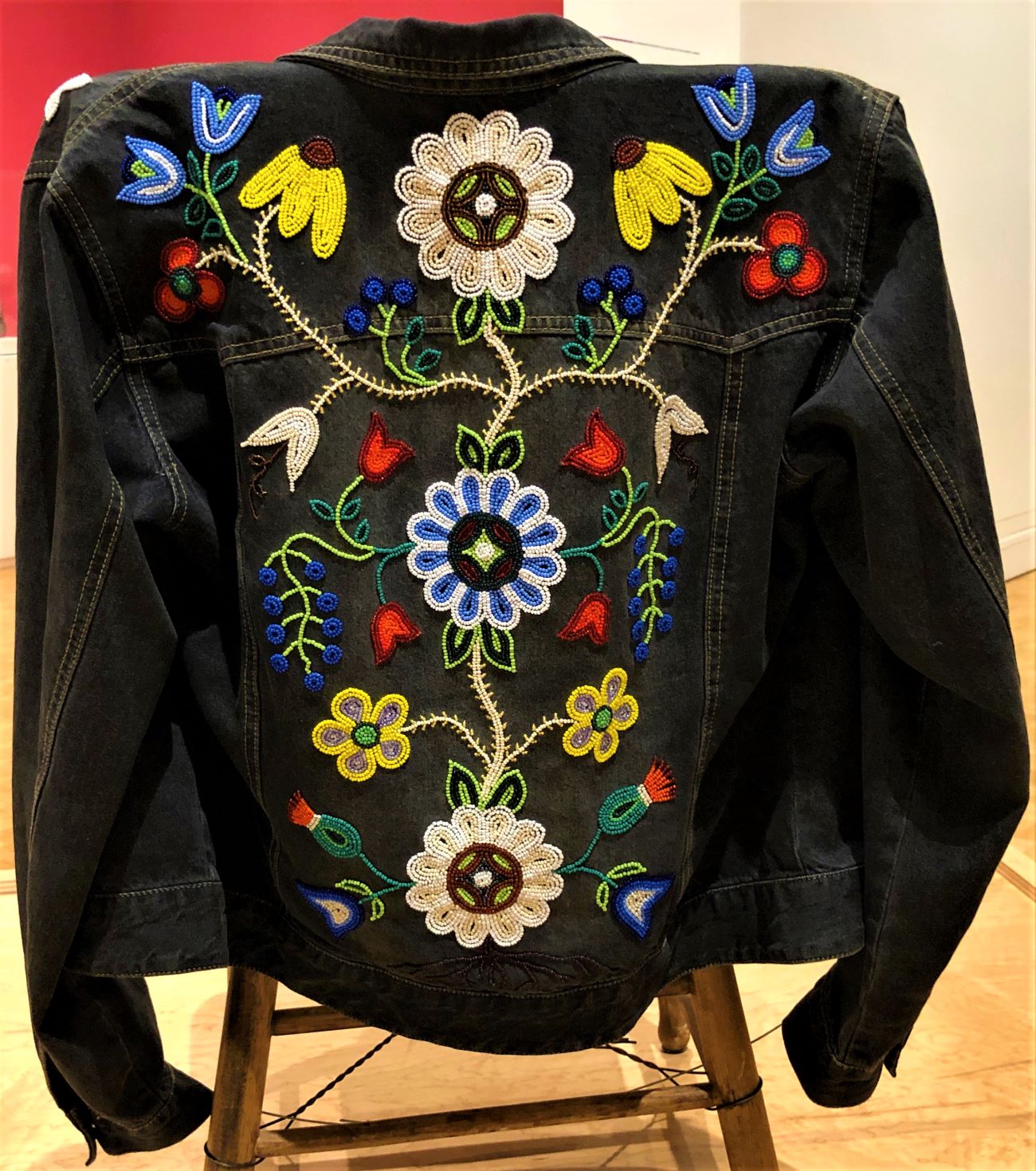
SAMUEL THOMAS (Iroquios) Treasuring the Memories, 2004 wood, leather, velvet, glass seed beads, metal

After the museum, we had planned to see the Regina Floral Conservatory which we thought opened at 1:00. When we arrived, we found they were closed until September 15 – the greenhouses are too hot for visitors to enjoy the flowers and plants during the summer. So, we went with Plan B and headed to Pile O’ Bones Brewery.

While we enjoyed the variety of beer there, the food menu was not what we wanted – so we moved on to the Canadian Brewhouse to have lunch. The flatware was fun and the beer was cold!


Oddly, the beer selection was quite limited, but we enjoyed a delicious meal!

Another fun day out and about! Tomorrow we leave Saskatchewan and head into Manitoba.
![]()
Wow — what a tour of the last 150 years of transportation and life on the plains. Thanks for cataloging photos and information. Yes, seeing the bead work was worth it — incredible planning and perfection in handwork — long, cool days in Canada!
Thanks again for the great photos and stories. Have fun
Wow, you have really gained a vast amount of information and historical knowledge! I will say it again, you should put this all into a book some day!
Looks like a great adventure in a place we’ve hardly ever thought about.
I liked the calculating machine. I’ve never seen one like it.
Reading the reviews about the Western Development Museum – it sounded like an intriguing place to visit – kind of like Greenfield Village and the Henry Ford Museum all in one! Jim thought he had seen the calculating machine before – he thinks his grandfather had one. Can you imagine if we still used something like that – or a slide rule?